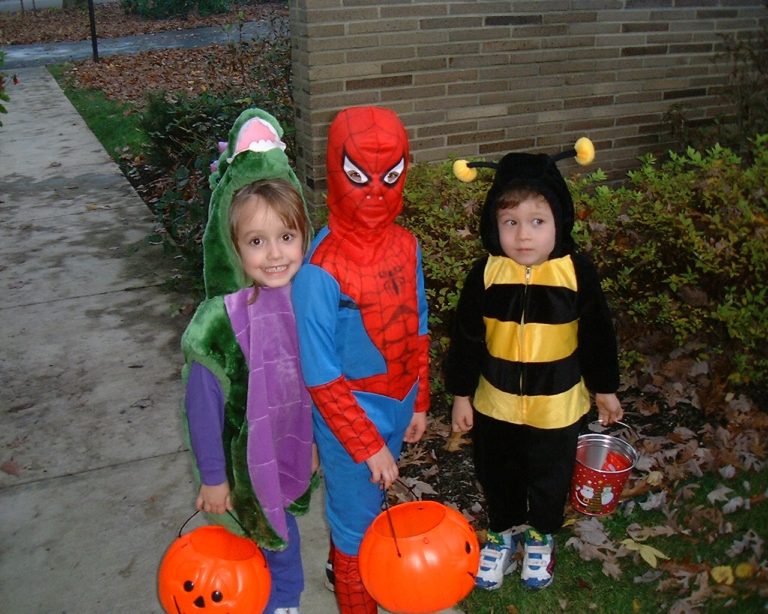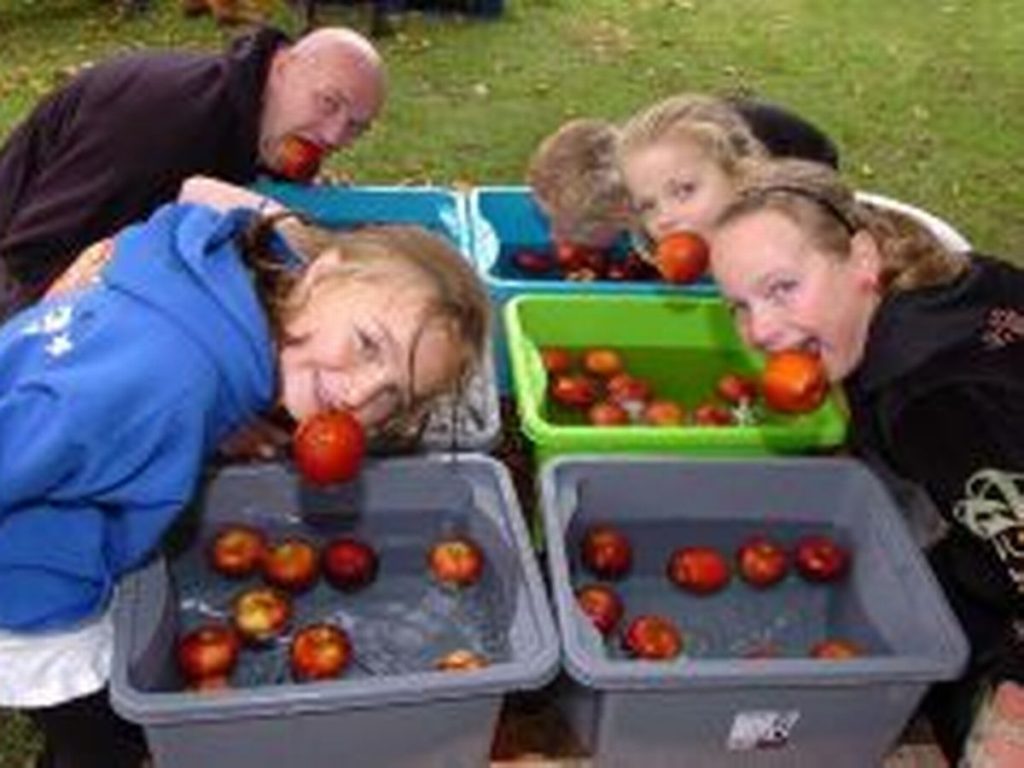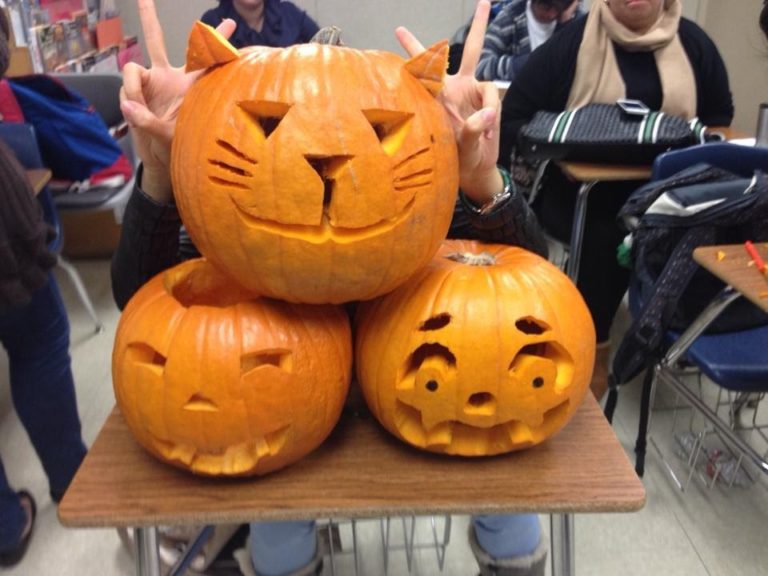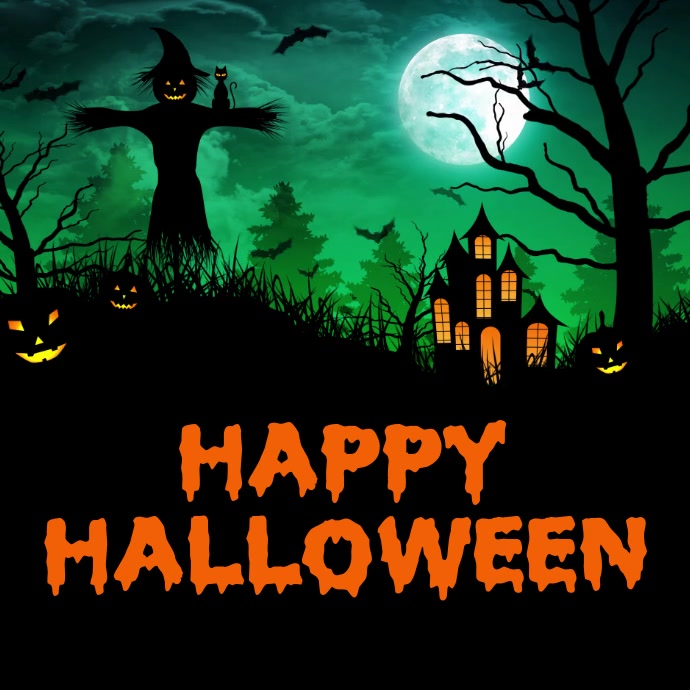Click to listen to audio version here!
Every year on October 31st in America, children dress up in costumes and go to their neighbor’s homes. It is a popular holiday custom and children receive candies and sweets from their neighbors when the children say, “Trick-or-Treat!”
Maybe you have seen a scary Halloween movie. Maybe you have carved a pumpkin. Maybe you have even put on a Halloween costume, but did you know that Halloween is not originally American at all? In fact, the history of Halloween is not so recent. The holiday that we know as Halloween has been influenced by many cultures over the centuries.

Celtic Origins
The Celtics lived hundreds of years ago in the place that is now known as Great Britain and Northern France. The Celtics worshipped nature and had many gods. One of these gods was the sun god who commanded their work and rest times and made the earth grow. The Celtics celebrated their New Year on November 1st. The fact that it was celebrated every year on this date explains their belief in the end of the “season of the sun” and the beginning of “the season of darkness and cold.”
A Dark Spiritual History
It was believed that all dead people were called together on New Year’s Eve (October 31). Dead people’s spirits, which took the form of animals, were scary. The most evil spirits took the form of cats. When the New Year began on November 1st, they celebrated with a festival, which lasted for three days. They called this celebration Samhain. Many people dressed in costumes and paraded around to celebrate this festival, which became the first Halloween.
Roman Intervention
When the Romans invaded Britain, they brought their culture and customs. The Roman goddess, Pomona, was honored for fruit and trees. One game that is popular on Halloween is bobbing for apples, which originally comes from Roman culture. After hundreds of years of Roman rule, the customs of the Celtic’s festival and the Roman Pomona Day mixed together into one holiday.

Christian Influence
This holiday was changed even more by the influence of Christianity, which soon spread into Europe. Catholic Popes wanted to change pagan holidays into Christian holidays. Christians called November 1st, “All Saints Day.” It was also called, “All Hallows Day.” Even though Christians had different beliefs, the festival at the beginning of November did not completely change. October 31st became known as All Hallow’s Eve, and then – Halloween.
English and Irish Traditions

Some people in England and Ireland continued to want to appease the spirits of the dead who wandered around at this season. It was common for them to leave out foods to pacify these wandering spirits. Later, some people dressed up as ghosts and asked for these foods for themselves. This later evolved into today’s custom of Trick-or-Treating. As time passed and some Irish people immigrated to America, they introduced these customs. One custom that became more popular in America was pumpkin carving.
Since the Halloween that we celebrate today has been influenced by these different groups, there are symbols from each culture. Symbols like black cats, which came from the Celtics, apples and other fruit, which came from the Romans, and ghosts and skeletons, which came from the Christians, combine to make Halloween as we know it today.
Americanizing Halloween
True to the American capitalistic culture, Halloween became more of a commercial holiday. People were encouraged to celebrate Halloween by having costume parties, playing games, going Trick-or-Treating, and making the holiday safer and more secular overall than its religious origins.
So what are you going to do this Halloween? Will you wear a costume? Will you carve a pumpkin? Whatever you do, try not to eat too much candy or play too many pranks on your friends. Be safe and enjoy the fun!

Do you want to learn 25 common Halloween vocabulary words? Just click this link to download. Happy Halloween!

Pingback: Which Halloween Costume Would You Buy? - Learn English with Mr. Jerry